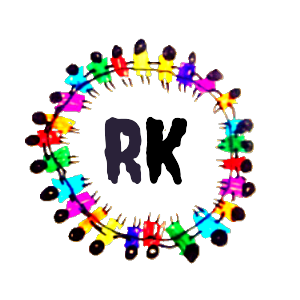🗣️ A. Greetings & Introductions
1. Hi! How are you?ஹாய்! நீங்கள் எப்படி இருக்கிறீர்கள்?
2. Good morning!காலை வணக்கம்!
3. Good afternoon!மதிய வணக்கம்!
4. Good evening!மாலை வணக்கம்!
5. Nice to meet you.உங்களை சந்தித்ததில் மகிழ்ச்சி.
6. Pleased to meet you.உங்களை சந்தித்ததில் மகிழ்ச்சியடைந்தேன்.
7. Long time no see.நீண்ட காலமாக பார்க்கவில்லை.
8. How have you been?நீங்கள் எப்படிப்பட்டிருந்தீர்கள்?
9. Where are you from?நீங்கள் எங்கிருந்து வந்தவர்?
10. I’m from [city].நான் [நகரம்] இல் இருந்து வந்தவன்/வள்.
11. What’s your name?உங்கள் பெயர் என்ன?
12. My name is [name].என் பெயர் [பெயர்].
13. Nice to see you again.மீண்டும் உங்களை பார்க்க மகிழ்ச்சி.
14. Have a great day!உங்களுக்கு ஒரு நல்ல நாளாக அமைய வாழ்த்துக்கள்!
15. See you soon.விரைவில் பார்க்கலாம்.
☀️ B. Daily Small Talk
16. How was your day?உங்கள் நாள் எப்படி இருந்தது?
17. What are you doing now?நீங்கள் இப்போ என்ன செய்கிறீர்கள்?
18. What did you do today?இன்று நீங்கள் என்ன செய்தீர்கள்?
19. How was your weekend?உங்கள் வார இறுதி எப்படி இருந்தது?
20. It’s a nice day.இன்று நல்ல நாள்.
21. The weather is great.வானிலை மிகவும் சிறந்தது.
22. I’m just relaxing.நான் சுமாராக ஓய்வெடுப்பதாக இருக்கிறேன்.
23. I’m running late.நான் தாமதமாகிறேன்.
24. I’m tired today.இன்று நான் சோர்வாக இருக்கிறேன்.
25. I’m feeling better.நான் சிறிது மேம்பட்டது என எண்ணுகிறேன்.
❓ C. Useful Questions
26. Can you help me?நீங்கள் என்னை உதவ முடியுமா?
27. Could you repeat that, please?தயவு செய்து அதை மீண்டும் சொல்ல முடியுமா?
28. Where is the bathroom?கழிப்பறை எங்கு இருக்கிறது?
29. How much is this?இது எவ்வளவு விலை?
30. Do you speak English?நீங்கள் ஆங்கிலம் பேச முடியுமா?
31. Can I ask you a question?நான் உங்களுக்கு ஒரு கேள்வி கேட்கலாமா?
32. Where can I buy [item]?நான் [உருப்படி] எங்கு வாங்கலாம்?
33. What time does it open?இது எப்போது திறக்கும்?
34. What time does it close?இது எப்போது மூடப்படும்?
35. How can I get there?நான் அதை எங்கு செல்ல வேண்டும்?
36. Is there a discount?தள்ளுபடி இருக்கிறதா?
37. Do you accept cards?நீங்கள் கார்டுகள் ஏற்றுக் கொள்கிறீர்களா?
38. May I try this on?நான் இதை முயற்சி செய்து பார்க்கலாமா?
39. Is Wi-Fi available?Wi-Fi கிடைக்குமா?
40. Could you show me on the map?நகշாவில் எனக்கு காட்ட முடியுமா?
41. Where is the nearest ATM?அருகிலுள்ள ATM எங்கு உள்ளது?
42. How far is it?அது எவ்வளவு தூரம் இருக்கிறது?
43. Which bus goes there?அங்க செல்ல எந்த பேருந்து போகிறது?
44. Can I have the bill, please?கணக்கு கொடுக்கலாமா, தயவு செய்து?
45. What is your phone number?உங்கள் தொலைபேசி எண் என்ன?
💬 D. Common Responses
46. I’m fine, thank you.நான் நன்றாக இருக்கிறேன், நன்றி.
47. I don’t understand.எனக்கு புரியவில்லை.
48. I’m sorry.மன்னிக்கவும்.
49. That’s interesting.அது சுவாரஸ்யமாக இருக்கிறது.
50. I like it.எனக்கு அது பிடிக்கிறது.
51. I don’t like it.எனக்குப் அது பிடிக்கவில்லை.
52. Maybe later.பின்னர் நடந்தால் நன்று.
53. I’ll do it.நான் அதை செய்வேன்.
54. I can’t today.நான் இன்றைக்கு முடியாது.
55. That’s okay.அது சரி.
56. I understand.நான் புரிந்துகொண்டேன்.
57. I don’t know.எனக்கு தெரியாது.
58. I’ll call you later.நான் பின்னர் உங்களுக்கு அழைப்பேன்.
59. That’s not possible.அது சாத்தியமில்லை.
60. I’m not sure.நான் உறுதியாக இல்லை.
😊 E. Emotions & Reactions
61. I’m happy for you.நான் உங்களுக்காக மகிழ்ச்சியடைந்தேன்.
62. I’m really excited.நான் மிகவும் உற்சாகமாக இருக்கிறேன்.
63. I’m worried.நான் கவலைப்படுகிறேன்.
64. I’m proud of you.நான் உங்களைப் போற்றுகிறேன்.
65. I feel sad.என்னை சோகமாக உணர்கிறேன்.
66. That makes me happy.அது என்னை மகிழ்ச்சியடைய செய்கிறது.
67. That frustrates me.அது என்னை கோபப்படுத்துகிறது.
68. I’m surprised!நான் ஆச்சரியப்பட்டேன்!
69. I’m disappointed.நான் மனசாட்சி கெட்டுவிட்டேன்.
70. That sounds amazing.அது அற்புதமாக தெரிகிறது.
🏢 F. Office & School Phrases
71. I have a meeting at 10.எனக்கு 10 மணிக்கு ஒரு கூட்டம் இருக்கிறது.
72. Can you send the file?கோப்பை அனுப்ப முடியுமா?
73. Please check the document.தயவு செய்து ஆவணத்தை சரிபார்க்கவும்.
74. I will finish it by today.நான் அதை இன்று முடித்து கொடுகிறேன்.
75. Let’s discuss this later.இதுபற்றி பின்னர் விவாதிப்போம்.
76. I need your feedback.உங்கள் கருத்து தேவை.
77. Could you review this?இதைக் விமர்சிக்க முடியுமா?
78. Deadline is tomorrow.கடைசி நாள் நாளைக்கு.
79. I’m on leave today.நான் இன்று விடுமுறையில் இருக்கிறேன்.
80. Please join the call.தயவு செய்து அழைப்பில் கலந்து கொள்ளவும்.
✈️ G. Travel & Shopping
81. I need a taxi.எனக்கு ஒரு டாக்சி வேண்டும.
82. Where is the hotel?ஹோட்டல் எங்கு இருக்கிறது?
83. I have a reservation.என்னிடம் முன்பதிவு உள்ளது.
84. Can I get a room for one night?ஒரு இரவு ஒரு அறை கிடைக்குமா?
85. Do you have vegetarian food?உங்களிடம் காய்கறி உணவு இருக்கிறதா?
86. Is breakfast included?காலை உணவு சேர்த்துள்ளதா?
87. I’d like to buy this.நான் இதை வாங்க விரும்புகிறேன்.
88. Can you gift wrap it?இதை பரிசாக அடுக்கு வழக்கா?
89. Where can I exchange money?நான் பணம் மாற்ற எங்கு போக வேண்டும்?
90. I need directions to the station.நிலையத்துக்கு வழி காட்டுங்கள்.
91. One ticket to [place], please.ஒரு டிக்கெட் [இடத்திற்கு], தயவு செய்து.
92. When is the next bus?அடுத்த பேருந்து எப்போது?
93. Is this seat taken?இந்த இருக்கை பிடிக்கப்பட்டதா?
94. I’d like a window seat.நான் சாளரத்தில் இருக்கையை விரும்புகிறேன்.
95. Do you have a map?உங்களிடம் ஒரு வரைபடம் இருக்கிறதா?
📱 H. Phone & Online
96. Can I call you later?பின்னர் உங்களை அழைக்கலாமா?
97. Please send me a message.தயவு செய்து எனக்கு ஒரு செய்தி அனுப்பவும்.
98. I didn’t get your message.உங்கள் செய்தி வந்திருக்கவில்லை.
99. Could you email the details?விவரங்களை மின்னஞ்சல் மூலம் அனுப்பமுடியுமா?
100. My internet is slow.என் இணையம் மெதுவாக உள்ளது.
101. I will join the video call.நான் வீடியோ அழைப்பில் கலந்து கொள்வேன்.
102. Please mute your mic.தயவு செய்து மைக் மவுட் செய்யவும்.
103. Can you share your screen?தயவு செய்து உங்கள் திரையை பகிர முடியுமா?
104. I’ll be right back.நான் உடனே வருவேன்.
105. Please wait a moment.தயவு செய்து சிறிது நேரம் காத்திருக்கவும்.
🤝 I. Polite Expressions & Help
106. Thank you very much.மிகவும் நன்றி.
107. You’re welcome.வரவேற்கிறேன்.
108. I appreciate your help.
